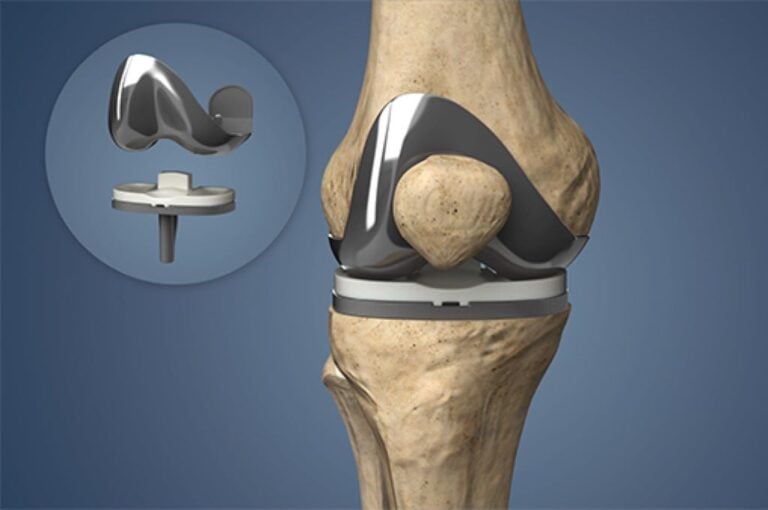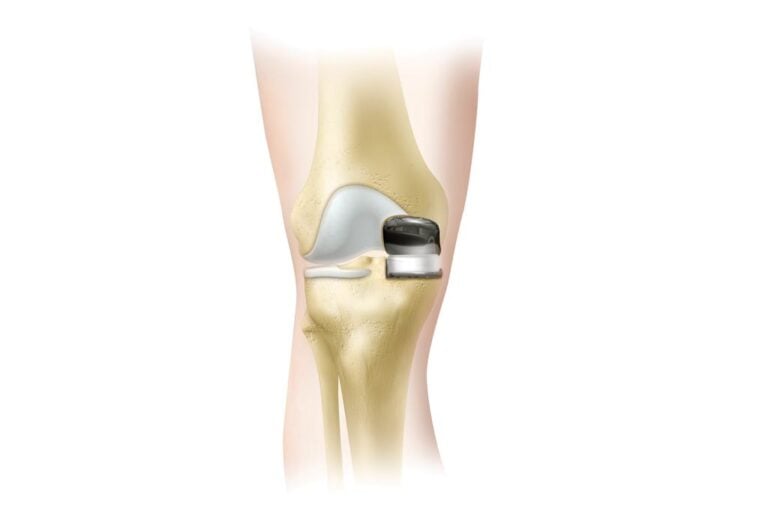As with any surgical procedure, complications may occur following knee replacement. Surgeons will counsel their patients regarding these possible complications (and their probabilities) before consenting to any surgery.
Bloodclots in the veins of the legs
Bloodclots (thrombosis) are the most common complication of knee replacement surgery. On occasion, the clots dislodge and travel through the veins to the heart to the lungs (pulmonary embolism). The patient will be prescribed blood thinning drugs to help prevent clots from forming after surgery. Compressive calf cuffs and leg exercises are used to prevent clotting.
Adhesions, limited flexion
A risk with any incision, adhesions (or scar tissue) can form and limit the amount of flexion that can be achieved post-surgery. When adhesions are excessive, surgeons may refer to it as arthrofibrosis. This situation will require manipulation under anesthesia (MUA) some weeks or months after surgery to break down the scar tissue.
Misalignment or poor choice of implant size
Misalignment is not a common complication but can occur when cuts are made at an improper angle. Choice of incorrect implants can range from a femoral component that is too large to inserts (spacers) that are either too thick or too thin. Either can cause post-op pain or range of motion problems.
Practice makes perfect and the more such replacements a surgeon does, the lower his error rate should be. Therefore, patients can minimize this risk by making sure the surgeon they choose has some considerable experience in knee replacements.
Infection
Infections are rare with joint replacement surgery but can involve primary infection, late onset infection or even a superficial infection.
Knee replacement surgery is conducted in a filtered operating room with sterile instruments. Antibiotics are given to the patient before, during and after the operation to lower the risk for infection.
Even with these precautions, infections can sometimes occur. The risk for infection is increased in patients with rheumatoid arthritis or diabetes, patients who have been taking cortisone for prolonged periods, patients whose joint was previously infected and patients who had infection in another part of their body during surgery.
Implant loosening
Implant loosening from the bone is the most concerning potential problem in the long-term. Loosening can be the result of infection or the result of faulty techniques during surgery, poor bones, damaged and softened by osteoporosis or rheumatoid arthritis, obesity or unnecessary force as in accidents but the most common reason is that the implant just works loose from the bone.
Again, practice makes perfect. The more knee replacements a surgeon does, the better his technique should be. Therefore, patients can minimize the risk of a loose implant by making sure the surgeon they choose has considerable experience in knee replacements.
Allergic or other reactions
Rarely it is possible to have an allergic reaction to the metal used in a knee replacement. Patients who are aware of their metal allergies should be test-exposed to various implant components prior to surgery. There is a knee replacement prosthesis developed for just such cases where the implants are coated in ceramic so the metal is not exposed to the tissues.
Allergy to the plastic components has never been reported.
Nerve damage
On rare occasions, nerve damage can occur with knee replacement. The odds are low but when this type of nerve damage occurs, the affected nerve usually recovers after 6 to 12 months. It is not uncommon for the skin at the front of the knee and the outer side of the incision to be numb because a branch of a small nerve is cut during surgery. Sensation usually returns to normal within months.
There are several other possible complications following knee replacement surgery. It is important to note that the great majority of knee replacements are successful and without any significant complications whatsoever. Be sure to talk with your surgeon about these possible complications so that you are adequately prepared before your knee replacement.
image credit: flickr.com/mikebaird






